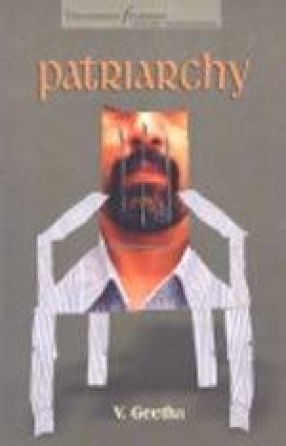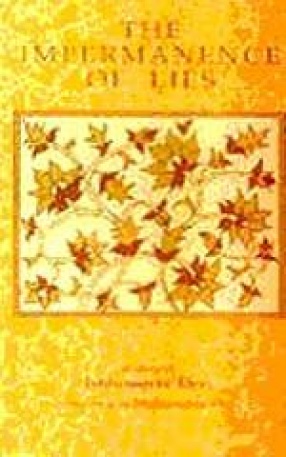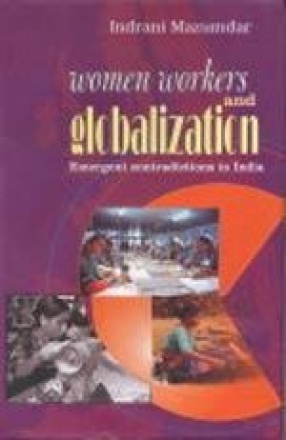
Stree

28 books









This is the first of four readers for students of women’s studies, particularly for Masters’ level courses in women’s studies, and more generally across undergraduate and certificate courses as the concept of ‘gender’ has been introduced at all levels of curricula. The reader reflects many of the concerns that have come up in women’s studies across two decades. This first volume focuses on some of the major economic and social ...

Although the challenge to the hegemonic status of the institution of marriage in India is grabbing the limelight in popular media, it has received comparatively less attention in the social sciences. This path-breaking collection presents an analysis of marriage from historical, social, cultural, psychological and legal perspectives. Changes wrought by globalization, by information technology and by the increasing social visibility of queer life forms and ...

Sarmistha Dutta Gupta is a scholar, translator and activist who has published earlier with Stree has a new book out. In Identities and Histories: Politics and Women’s Writings in Bengal she explores the interface between women’s writing and politics and studies gender identities in their shifting interrelations with other categories of identity like class and religion. Focusing on what Bengali middle-class women wrote in leading literary and political ...

Addressing students and the general reader, Theorizing Feminism series introduces key concepts in feminist theory. Any reader will find the series vitally useful, not just for understanding what new theories mean and how they are used but also for grasping how they have evolved.Examining the crucial linkages between caste and gender, undertaken, perhaps, for the first time, Uma Chakravarti unmasks the mystique of consensus in the workings of the caste system to ...

This collection of early writings of Malayalee women, translated for the first time into English, give us, in the words of V Geetha, texts that dazzle. Written between 1898-1938, they reveal the vigorous debate over modern gender relations that was taking place in this period. Women reflected on what was Womanly, on education, duties, vocation and civil roles, an ongoing discussion, first influenced by reformism and later by nationalist and communist ideas, which ...

Women all over South Asia experience a common predicament when it comes to the religious-personal laws of their communities that ‘normalize’ their exclusion and emphasize their inferior status vis-?-vis men. All matters of marriage, divorce, custody, maintenance and inheritance fall under religious-personal laws, which combined with customary practices, perpetuate injustice and suffering. Focusing on the position of women within the state, law and religion, ...

Addressing students and the general reader, this series introduces key concepts in feminist theory. Any reader will find the series vitally useful, not just for understanding what new theories mean and how they are used but also for grasping how they have evolved. In her incisive discussion V. Geetha points out that ‘gender is everywhere’, and when we allocate to the male and female sexes, specific and distinctive attributes and roles, we are ‘doing’ ...

In this book, the trauma of the Partition in Eastern India is discussed explicitly in a way that has not happened before. Drawing upon interviews with women who were uprooted from old East Bengal, on diaries, memoirs and creative literature, the editors lift the veil of silence that has surrounded the Bengal Partition of 1947. The lack of overt public discourse has meant that people outside Bengal have tendeedto believe that the impact was very much less on the ...

How do cultures define education, especially female education? Sita Anantha Raman explains how perceptions change, how women's lives are affected, and how the new dispensation still remains directed by the male view of the educated woman. As the colonial government policy changed towards intervention, urged on by Western mission-aries, government officials and South Indian men-the latter being the product of Western-style education--women were seen as almost all ...

Translated for the first time from the Bengali, this astonishingly radical novel is about Chhobi, a gutsy, misfit girl from a rural landowning family, who questions injustice, fights to share the privileges offered to her brother and male cousins, and refuses to see her future as just another submissive household drudge. Nabankur means a new seedling, which is personified by Chhobi, who is growing up in the late 1930s and the early 1940s in Bengal where ...

These English translations from the Gujarati bring Saroj Pathak’s work to a wider audience, giving it the greater attention it deserves. Delving deep into the human mind, the stories depict the pitfalls of communication, the infinite possibilities of misunderstanding, of doubt and despair. At the same time they celebrate the human psyche’s ability to bridge these chasms and make connections, of love, understanding, and friendship. Pathak considers the ...

Fluid Bonds makes gender visible in the various ways water is dealt with, and questions how these ways affect gender and how gender affects the views on water. The connections between gender and water are multifaceted, contingent and heterogeneous. Through a rich offering of case studies, it identifies the multiple and changing relationships between the two, and notes some commonalities whilst gendering the use and management of water. The streams of ...

Sabitri Roy’s trilogy, Paka Dhaner Gan, translated for the first time into English, provides as epic panorama of rural Bengal of the late 1930s and the 1940s, encompassing the freedom movement, war, and the Tebhaga movement, the peasants’ uprising against unjust taxes by the zamindars or landlords. Spanning generations, this story shows how the struggle changed rural Bengal. The peasants and their leaders took ideas of equality into the fields, sometimes ...


How is gender ideology reproduced in adivasi societies? How far can gender constructions be instrumental in perpetuating women's subjugation and exploitation? Focusing upon Chotanagpur, now a part of the newly formed state of Jharkhand, Shashank Sinha tries to raise questions that are of paramount concern yet are so peripheral in the existing studies on tribes and gender. Investigating traditions, an area largely ignored by historians and social scientists, Sinha ...



Agriculture in India is in crisis with the out-migration of men from farming to towns, cities or other rural areas in search of work, leaving the running of farms to women. The resulting 'feminization' has ominous implications for food security and rural livelihoods. Women seem to be in a no-win situation where work burdens and responsibilities have inclusive without enhancement of productivity or earnings. While the economic importance of land has declined (its ...

Investigating the impact of globalization on women workers in India, this book demystifies the phenomenon of globalization, offering an overview of its prime drivers, processes and forces. Four sectoral studies of women workers are provided: two on factory women in garment exports and electronics; the third on home-based workers in a range of manufacturing processes and industries; and the fourth on middle class women working in Information Technology Enabled ...

Addressing students and the general reader, this series introduces key concepts in feminist theory. Any reader will find the series vitally useful for understanding what new theories mean and how these have evolved and are being used today. Where does the word 'patriarchy' come from? Once it meant the 'absolute rule of the father or the eldest male member over his family'. Today it refers to male authority and power as exercised in our lives. Culturally it ...

In writing about her life and work, Renuka Ray also relates the momentous history of India, from her birth in 1904 to her death in 1997, encompassing the years of the growth and consolidation of the nationalist movement, to partition and independence, and the equally compelling post-independence period. As a member of the ruling elite, a close associate of Gandhiji, Rabindranath Tagore, Jawaharlal Nehru, Bidhan Chandra Roy, Durgabai Deshmukh, Vijayalakshmi Pandit ...

Carolyn Sleightholme and Indrani Sinha write with rare perception and sensitivity about the lives of sex workers in Calcutta who have shared their stories with them. Through interviews and surveys, and case studies, they interrogate the double standards of sexual morality that govern the lucrative sex trade in India, thus making visible the more than twenty thousand mothers, heads of households, and community members whose activities and voices have been silenced ...

This remarkable collection of short stories spans forty years of the writing career of one of the most eminent Bengali Writer- Jyotirmoyee Devi. Translated first time in English these stories range from the feudal world of the princely state of Jaipur, to East Bengal at the time of the partition, to the urbane world of our cities. The stories reflect the author's concern with many issues which are still painfully current today: how traditional cultures try to ...
